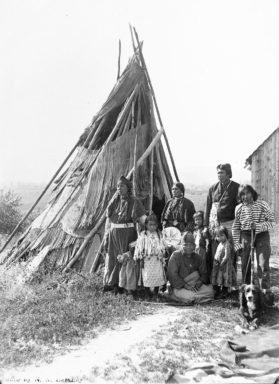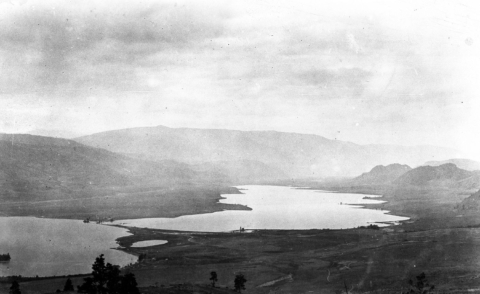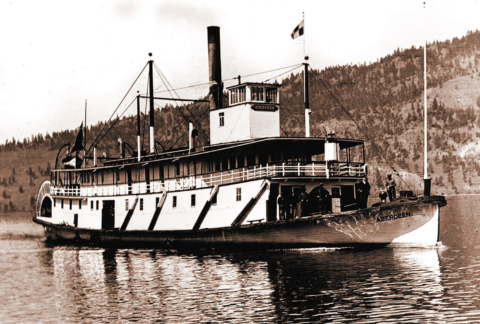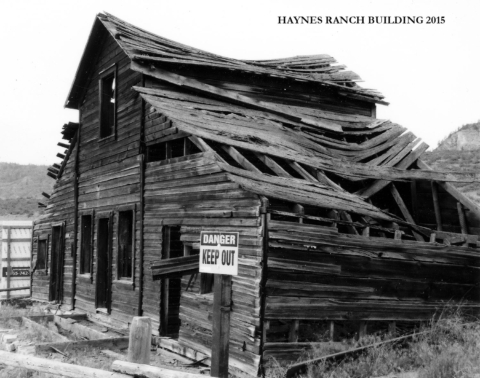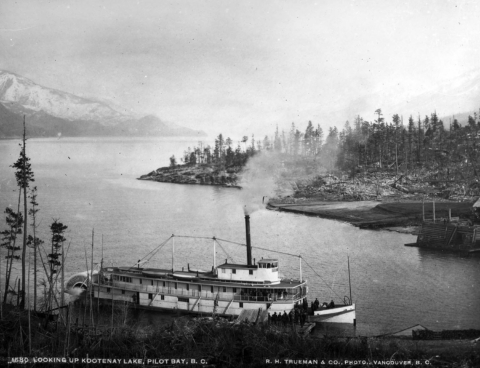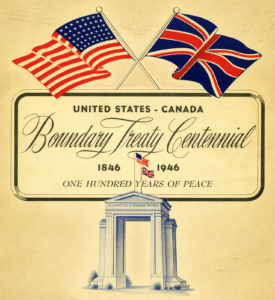
Before the completion of the Hope-Princeton Highway, it was normal for auto travelers going to the coast from the Okanagan, to take the American route through Osoyoos to Highway 90. It wasn’t any farther than going through Kamloops on Highway 1.
The border was unmarked, no walls or fences. We knew the border crossing people as they were our neighbours.
The 49th parallel was chosen as part of a negotiation between the governments of America and Great Britain, referred to as the “Oregon Treaty”. In 1846, to quash 20 years of aggressive claims to the territory encompassing Montana to Washington, including BC from the 54th parallel, a true border was agreed to.
George M. Meir, Minister of Education for BC, put this all in perspective: “Oregon Territory was then largely a vast, uninhabited wilderness, valued primarily as a fur preserve by the traders of both countries. Thanks to the organizing genius of the Hudson’s Bay Company, British interests were for many years predominant. Time, however, was working on the side of the United States. A tide of settlement was sweeping across the great American plains which found no parallel in the adjacent British territory. Eventually it reached the shores of the Pacific Ocean and became a deciding factor in solving the question of disputed national sovereignty. Nor must it be forgotten that for both Great Britain and the United States there were larger issues involved, more significant, perhaps, than the mere possession of the thousands of square miles which eventually comprised the states of Washington, Oregon, Montana and Idaho, and the province of British Columbia.
There is however, an even greater significance to the event we commemorate. It brought to a close a period of protracted negotiations that from time to time promised to become fruitful of increasing controversy and tension. The respective claims of Great Britain and the United States to the territory were often ably, though vigorously, expounded. Despite the fact that Oregon Territory was remote, that its great natural resources were practically unknown and unexploited, for a time public sentiment became so inflamed that recourse to war was frequently referred to as a possible, if not probable, means of settling the dispute, Yet in the end an amicable adjustment was reached. In both countries, the real strength of public opinion was arranged against a belligerent policy. The treaty was founded on a basis of neighbourliness, and laid the foundation for future Canadian-American relations in this westernmost part of the continent that has been preserved from that day to this.
Admittedly, the relations of Canada and the United States since that day have many times been troubled, but they have never been strained beyond the point of peaceful adjustment. Our joint problems have all been faced and solved in the light of a realm that springs from the knowledge that whilst we are two peoples, we are one family.”
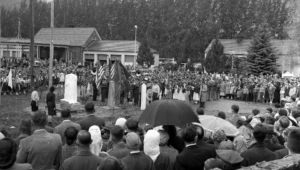
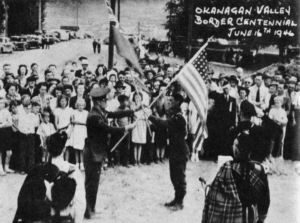
The Boundary Treaty Centennial drew caravans of goodwill from all sections of the Okanagan Valley. They motored to the international border at Osoyoos and Omak on the overcast Sunday afternoon of June 16th. Decorated cars and floats, veteran groups, school bands, and native Chiefs in full regalia, ebrated the unveiling of a monument by Dr. R.R. Laird, MLA for Similkameen, and J.V. Rogers, Mayor of Wenatchee.
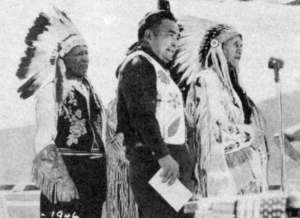
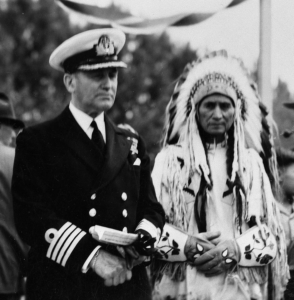
The event combined speeches of celebration from Women’s Institutes, Legion groups and awards to both country’s high school students. The most notable participation was from the Colville First Nation and the Inkameep First Nation in the declaration of brotherhood officiated by Chief Narcisse Baptiste George, and Chief Jim James.
Canadian Navy Captain Clarence King DSO, DSC recently retired to Osoyoos, with Chief Jim James of the Colville Nation.
The native Chiefs spoke at length of the original treaties of the last century that allowed them to continue to be one nation that could travel unimpeded across the border. Chief George noted that Chief James was his cousin as they shared a great-great-grandfather who worked as a packer for the Hudson’s Bay Company and introduced the French language to the Okanagan peoples.
Our border today is marked in most places of B.C. with only a slash on the mountains. It is maintained now by highly technical satellite imaging.

